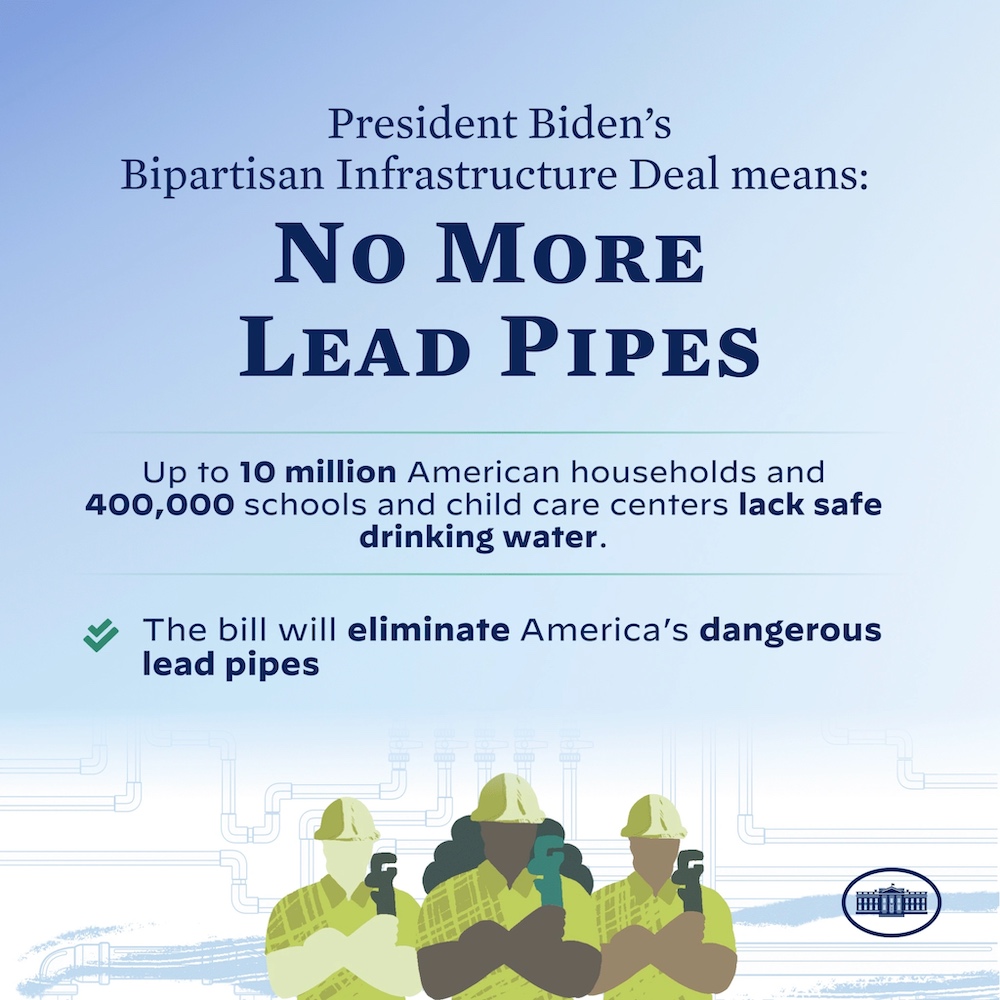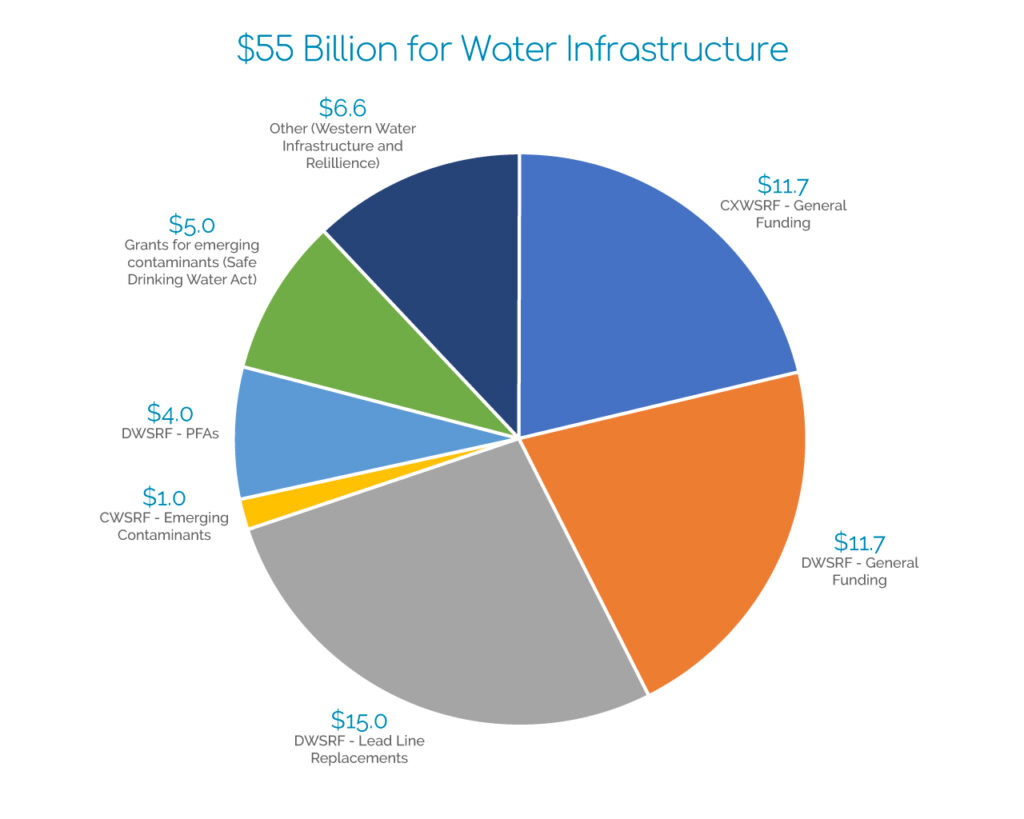& Construction

Integrated BIM tools, including Revit, AutoCAD, and Civil 3D
& Manufacturing

Professional CAD/CAM tools built on Inventor and AutoCAD
6 min read
After much debate, delay, compromise, and – finally – voting, the US Infrastructure Investment and Jobs Act (IIJA) was passed. This $1.2 trillion act comes not a moment too soon. For years, organizations like ASCE have graded the US infrastructure as a ‘D’ (currently a notch up at C-) and have estimated more than $4.5 trillion in funding is needed to improve that grade for bridges, roads, ports, and water systems. While the $1.2 trillion act seems very promising, we know that it can’t fix all of our infrastructure problems overnight. So the greater question is: How can engineers, modelers, consultants, and utilities make the most with this new funding and these potential resources? This article aims to answer some basic questions about the act, investigate its water infrastructure provisions, and hopefully help today’s problem solvers make the most of these resources.
Last year alone, the United States faced 22 extreme weather and climate-related disaster events with losses exceeding $1 billion each – a cumulative price tag of nearly $100 billion.
White House IIJA fact sheet
The IIJA follows the earlier introduced Drinking Water and Wastewater Infrastructure Act of 2021 to form the basis of its funding provisions. About half of the $1.2 trillion is additional, unplanned spending aimed directly at infrastructure such as transportation, broadband, electric, and water services. This represents the most significant single federal investment ever in our nation’s infrastructure. A full $55 billion of new funds have been set aside to be allocated toward water infrastructure. Much of this funding is spread out evenly from 2022 through 2026, so while the IIJA does not create an immediate impact on short-term development and planning, utilities and consultants should begin investigating steps and processes to learn how to access these new resources.
Breaking down the $55 billion in water investments, it becomes clear that specific issues are being prioritized at the national level. There are a number of specific issues highlighted in the White House press release, and backed up with funding in the IIJA:
Replacement of lead pipe services: Approximately 10 million American households and 400,000 schools and childcare centers lack safe drinking water in part because of likely lead exposure. These numbers may be even higher for utilities that may not even be aware of the lead service lines in their network. Almost 30% of the water sector funding in the bill is dedicated to lead service line location and replacement. The 2014-2019 Flint water crisis was a wake-up call heard nationwide. While most utilities have been making steady progress towards lead replacement ever since, these additional funds give utilities no excuse to delay addressing this critical infrastructure problem as quickly as possible.

Improving water quality: While lead pipes are a critical problem, it is not the only water quality issue America faces. Per- and polyfluoroalkyl substances (PFAs) are an emerging group of difficult-to-treat chemicals addressed in the act. These chemicals and many others like them are found in everyday household products and are being detected at much higher than acceptable levels in wells and water sources across the country. More research funding will help uncover the true scope of this problem, as well as prevent damage from future emerging contaminants.
Disadvantaged and at-risk communities: Within each of these water-related issues addressed within the act, matters of equity and serving those most at risk are highlighted. Specific funds within the $55 billion are allocated directly to tribal nations, while lead pipe replacement and PFAs’ funds have language in place for state revolving funds to prioritize disadvantaged communities. Ideally, by combining the water funds with roads, broadband, electric, and other infrastructure services, utilities can drive entire ‘Right of Way’ (ROW) improvements to dramatically enhance not just physical infrastructure but the livelihoods of many communities and neighborhoods.
Storm flood systems: Climate change isn’t going anywhere and, therefore, neither will severe weather systems and storm flooding. Now more than ever, there will be a need to improve the management of stormwater flood systems. The IIJA will administer crucial and significant funding needed to rebuild the water infrastructure systems in the areas and communities most vulnerable to escalating weather storms and devastating floods.
Want to learn more about the ideas behind Right of Way planning? Read Lifting a Community, a Holistic Approach by David Totman, our VP of Asset Management.
Civil + Structural Engineer Guest blog
In general, this is how the $55 billion total for water is allocated:

With this allocation spread, it becomes clear that the best way for utilities and consultants to access these funds is either via the EPA itself (~$5+ billion) or, more likely, through State Revolving Funds (~$43.4 billion). Established in 1996, these State Revolving Funds traditionally offer low-interest loans for kick starting necessary water projects, but nearly half of the $43.4 billion allocated by the act has been set aside for grants. Simply by looking at the percentages, these funds are taking on greater importance and are the preferred water infrastructure funding vehicle for the Biden administration.
These revolving funds may be under-utilized or stretched thin, depending on the state. For example, in California’s 2019-2020 state fiscal year, their Drinking Water State Revolving Fund provided ~$147.4 million in loans and grants, while they had ~$2 billion in applications the next fiscal year. Alternatively, some states may have under-utilized revolving funds due to lack of awareness; more than one state website gives a 404 error even when trying to find their application! In general, the best way to learn about these state revolving funds, before the additional IIJA funds are officially delivered to the states halfway through 2022, is via the federal EPA website. There are separate websites for the Drinking Water & Clean Water State Revolving Funds and links to each state’s website.
In addition, the EPA has recently allocated the funding for each state for 2022 for initiatives such as lead service line replacement, emerging contaminants, and general state revolving funding.
A lot! No matter what state or agency you might apply for additional funding through, we may have a tool you can use to help better justify and inform your application and implement your solution once funding is received. While all the State Revolving Fund applications may be slightly different, all of them contain language which requires careful CIP budgeting and prioritization. We can help with disadvantaged communities (InfoAsset Planner), hydraulic analysis (InfoWater Pro/InfoWorks ICM), and consideration of green infrastructure and flooding events (InfoDrainage). Innovyze tools have been used for decades to justify funding at the municipal and state levels and now at the federal level.
In addition, I encourage you to read actual text from the Infrastructure, Investment, and Jobs Act. It’s your $1.2 trillion after all; you deserve to see exactly where it’s headed!
Sign up for the One Water Blog newsletter, and we'll keep you updated about our top stories, along with the best content we find online. We only send out a newsletter when we have something interesting to share.
May we collect and use your data?
Learn more about the Third Party Services we use and our Privacy Statement.May we collect and use your data to tailor your experience?
Explore the benefits of a customized experience by managing your privacy settings for this site or visit our Privacy Statement to learn more about your options.